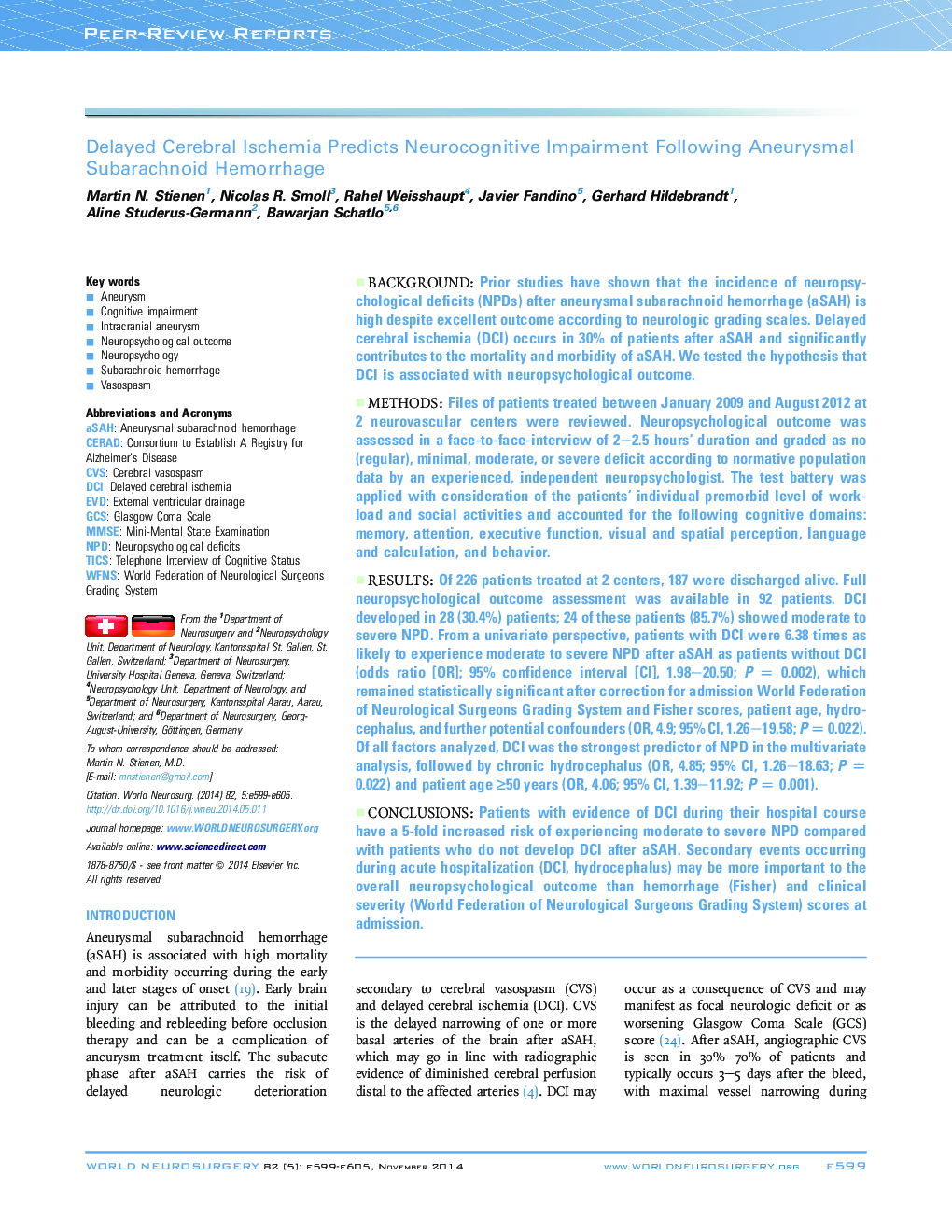| کد مقاله | کد نشریه | سال انتشار | مقاله انگلیسی | نسخه تمام متن |
|---|---|---|---|---|
| 3095356 | 1190909 | 2014 | 7 صفحه PDF | دانلود رایگان |
BackgroundPrior studies have shown that the incidence of neuropsychological deficits (NPDs) after aneurysmal subarachnoid hemorrhage (aSAH) is high despite excellent outcome according to neurologic grading scales. Delayed cerebral ischemia (DCI) occurs in 30% of patients after aSAH and significantly contributes to the mortality and morbidity of aSAH. We tested the hypothesis that DCI is associated with neuropsychological outcome.MethodsFiles of patients treated between January 2009 and August 2012 at 2 neurovascular centers were reviewed. Neuropsychological outcome was assessed in a face-to-face-interview of 2–2.5 hours' duration and graded as no (regular), minimal, moderate, or severe deficit according to normative population data by an experienced, independent neuropsychologist. The test battery was applied with consideration of the patients' individual premorbid level of workload and social activities and accounted for the following cognitive domains: memory, attention, executive function, visual and spatial perception, language and calculation, and behavior.ResultsOf 226 patients treated at 2 centers, 187 were discharged alive. Full neuropsychological outcome assessment was available in 92 patients. DCI developed in 28 (30.4%) patients; 24 of these patients (85.7%) showed moderate to severe NPD. From a univariate perspective, patients with DCI were 6.38 times as likely to experience moderate to severe NPD after aSAH as patients without DCI (odds ratio [OR]; 95% confidence interval [CI], 1.98–20.50; P = 0.002), which remained statistically significant after correction for admission World Federation of Neurological Surgeons Grading System and Fisher scores, patient age, hydrocephalus, and further potential confounders (OR, 4.9; 95% CI, 1.26–19.58; P = 0.022). Of all factors analyzed, DCI was the strongest predictor of NPD in the multivariate analysis, followed by chronic hydrocephalus (OR, 4.85; 95% CI, 1.26–18.63; P = 0.022) and patient age ≥50 years (OR, 4.06; 95% CI, 1.39–11.92; P = 0.001).ConclusionsPatients with evidence of DCI during their hospital course have a 5-fold increased risk of experiencing moderate to severe NPD compared with patients who do not develop DCI after aSAH. Secondary events occurring during acute hospitalization (DCI, hydrocephalus) may be more important to the overall neuropsychological outcome than hemorrhage (Fisher) and clinical severity (World Federation of Neurological Surgeons Grading System) scores at admission.
Journal: World Neurosurgery - Volume 82, Issue 5, November 2014, Pages e599–e605
